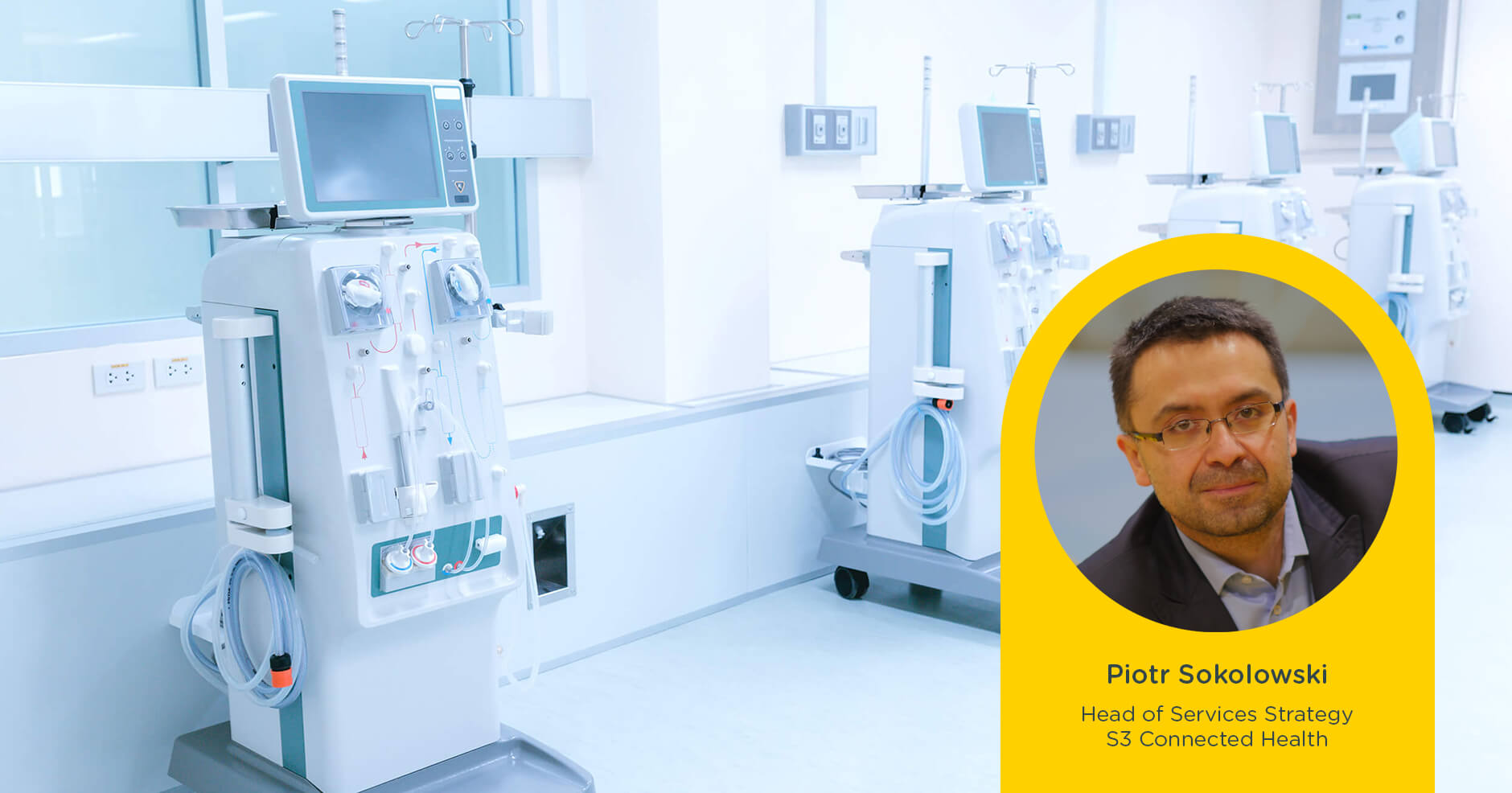Many medtech companies mandate that all new medical devices must be equipped with connectivity but how can pre-existing devices and equipment, of which they have hundreds of thousands already in the field, be updated and improved with connectivity?
While it is more difficult than designing connectivity into an all-new device, connectivity can be added retrospectively; it should, however, be considered on a case-by-case basis after identifying the right combination of business goals, customer needs, and technology solutions.
Identifying business needs for device connectivity and gaining internal support
To get your project started, you will need to identify a genuine business reason for adding connectivity to a pre-existing device. For internal stakeholders to back your project, determine and explain how collecting data on this device will benefit the company; offering tangible gains is crucial for success here.
The perceived benefits for adding connectivity to an existing medical device will vary among internal stakeholders based on their function within the company:
- For Operations, data collected can be used to improve maintenance, customer support, and post-market surveillance functions. When an existing medical device is a complex piece of capital equipment and is widely used, these are often the most compelling reasons for retrospectively adding connectivity; it can significantly reduce the cost of maintenance and extend the life-cycle of the device. Some companies can use it as an opportunity to turn maintenance into a continuous, profitable, long-term service from what previously was a pure cost item.
- For Sales and Marketing, data insights can help improve product differentiation, establish more meaningful customer engagement, and general additional sales of, for example, consumables. The most forward-looking companies use the data from devices to offer their customers digital therapy management solutions that optimize treatment delivered by the devices.
- For R&D, data can be used to identify problems in the design and understand how current customers use a device and determine their unmet needs. Guiding R&D with real-world data will inform and direct future improvements to equipment and development of innovative new devices.
- For Clinical, real-world evidence can be gathered to support research and trials that may eventually lead to label expansion. This rapid data acquisition would be particularly useful in emergency situations, such as obtaining emergency approval for existing devices to new therapies for COVID-19 patients.
- For Commercial, data gathered will help optimize working capital, improve supply chain or support distributors, and service other stakeholders in your ecosystem. Data from equipment may also provide invaluable insights on new business models to propose to your customers; based on therapeutic outcomes rather than device sales or rent.
Achieving backing from multiple internal stakeholders is required to build a convincing business case and receive funding for any connectivity project. The initial case must provide tangible, but not necessarily enormous, impact. Often, after launching the first connectivity project and showing specific benefits, other stakeholders will be convinced of the value connectivity brings and will request new types of data to be delivered over the already existing connectivity mechanisms. These follow-on features can collectively deliver significant return on investment from the project.
Addressing customer needs with device connectivity
Unless they specifically request it, hospitals already using your equipment can be hesitant to allow modifications - even for improvement and particularly for connectivity, which some fear brings added risk of cyber-security threats.
However, hospitals don’t always realize how their unmet needs can be addressed by collecting data from existing devices; especially once devices are also integrated with Hospital Information Systems and EHRs. For example, collecting data from existing devices can help to:
- Reduce device downtime and proactively schedule preventative maintenance, eliminating unplanned service visits
- Understand and optimize utilization of the devices
- Locate the devices on the hospital premises to optimize and increase their use
- Optimize treatment set-up and patient preparation
- Validate consumables (e.g. medication against prescription) and track their usage across therapies
- Understand clinicians’ performance and create new, informed, optimized training based on real-world insights
However, hospitals may still come across as change averse. After all, they are operating within the confines of established therapy protocols, strict IT requirements, and overloaded clinical staff who don’t have the time to use new connected devices and services.
To succeed and demonstrate the real value of connectivity, you must empathize with clinical users, show how their real unmet needs can be addressed with the help of device data, and strive to deliver these upgrades into the clinical environment as seamlessly as possible.
Meaningful engagement with clinical staff like this results in the creation of impactful solutions; they often become champions of the connectivity project after this.
Practical considerations when adding connectivity to an existing medical device
Once support for the connectivity case is gained internally and in-hospital, the final hurdle is introducing connectivity and data collection technology into the device as seamlessly as possible. This means the least possible impact on the equipment design and associated processes (e.g. manufacturing) as well as with minimum regulatory burden resulting from the change. When doing this, the following aspects must be considered:
- Impact on the equipment design: The connectivity component (whether internal or external) will need to meet a number of diverse requirements related to aesthetics, mechanical, EMC, power consumption, heat dissipation, HW Integration/separation, SW integration/separation, Bill-of-Materials cost, etc. It requires excellent engineering skills and innovative thinking, as there is much less design freedom than in new designs.
- Impact on manufacturing and operations: Adding connectivity will mean adding to an established component supply chain, manufacturing line, or operations processes; you have to make sure the impact of this is minimized. Re-using existing components and suppliers, complying with their DFM and other DFX, and, most of all, containing the design change within particular subsystems helps to reduce the impact.
- Selecting the right communication method: There is a wide selection of standards from Zigbee, Bluetooth, and BLE, through WiFi, LoRaWAN, NB-IoT, and LTE-M, to WPANs and 5G. However, options will be reduced by the product constraints mentioned above and limited by the environment in which the device will reside.
Aspects that are not commonly considered include: signal propagation through complex building structures; interoperability with existing protocols, esp. WiFi; electromagnetic compatibility with existing medical devices; cellular network coverage or the need to install additional gateway devices; and the total running costs of connectivity, e.g. cellular IoT data plans.
- Cyber-security framework: The connectivity function must meet requirements in three key domains: Technical, e.g. with end-to-end data encryption and other security controls; Regulatory, e.g. following cyber-security guidelines and patient data privacy standards, and executing independent tests and certifications; and Environment, i.e. fitting into customers’ cyber-security frameworks to support on-going security analysis, FW/SW updates, and vulnerability management.
- Integration with internal and external systems: Consider how connected equipment will be integrated with functions like identity management, secure operations, inventory management, customer care, and others; without which the device data cannot be fully utilized.
Partnering for success with connected medical devices
To improve your chances of success when adding connectivity to existing devices, consider partnering with a specialist firm who can assist with the above.
Piotr Sokołowski
Head of Services Strategy, Connected Health Solutions
S3 Connected Health
To find out more about how connectivity can drive
operational efficiencies for your company, download our new whitepaper:Unlocking Medtech’s Future Potential with Connected Devices and Services


